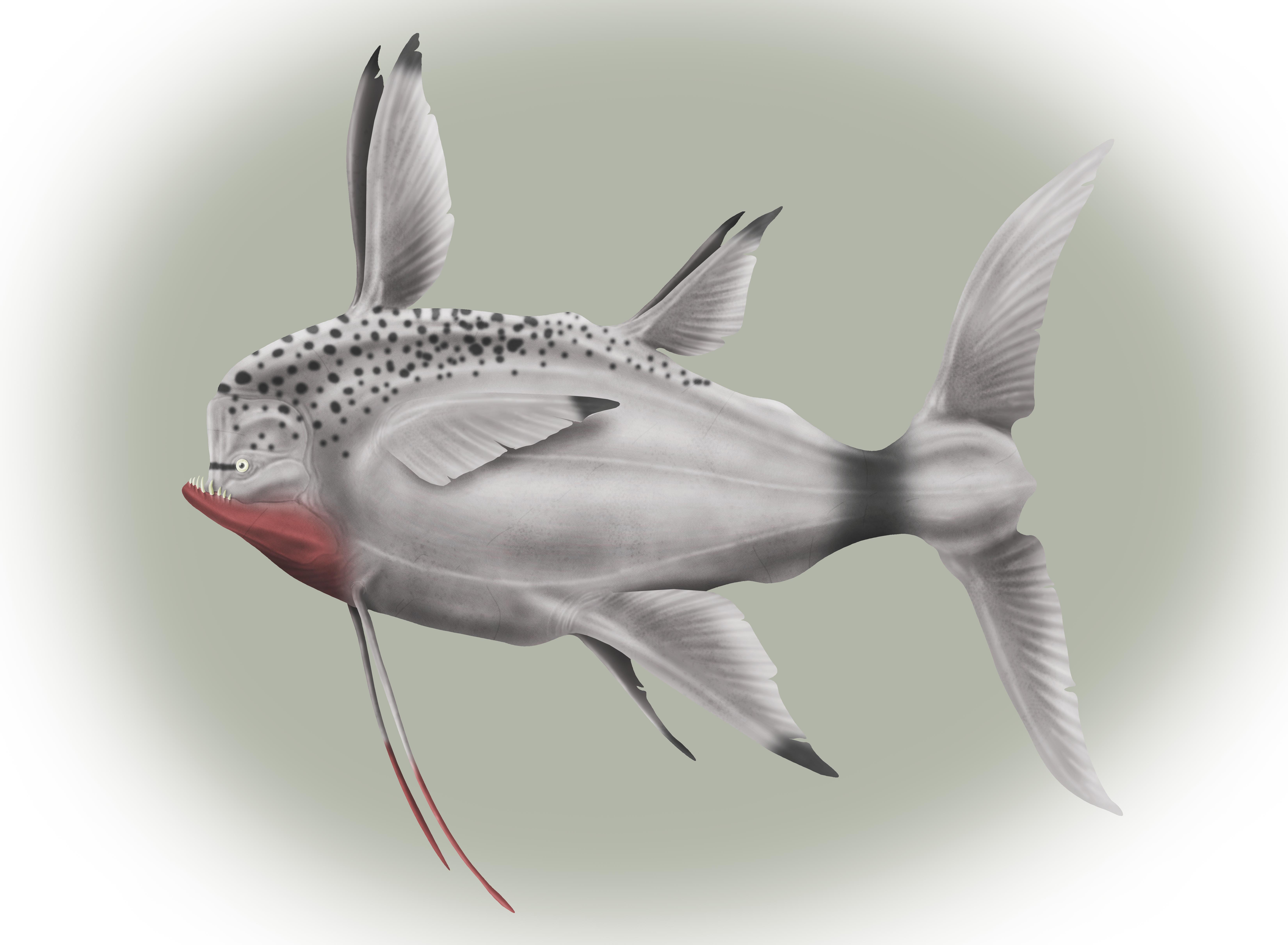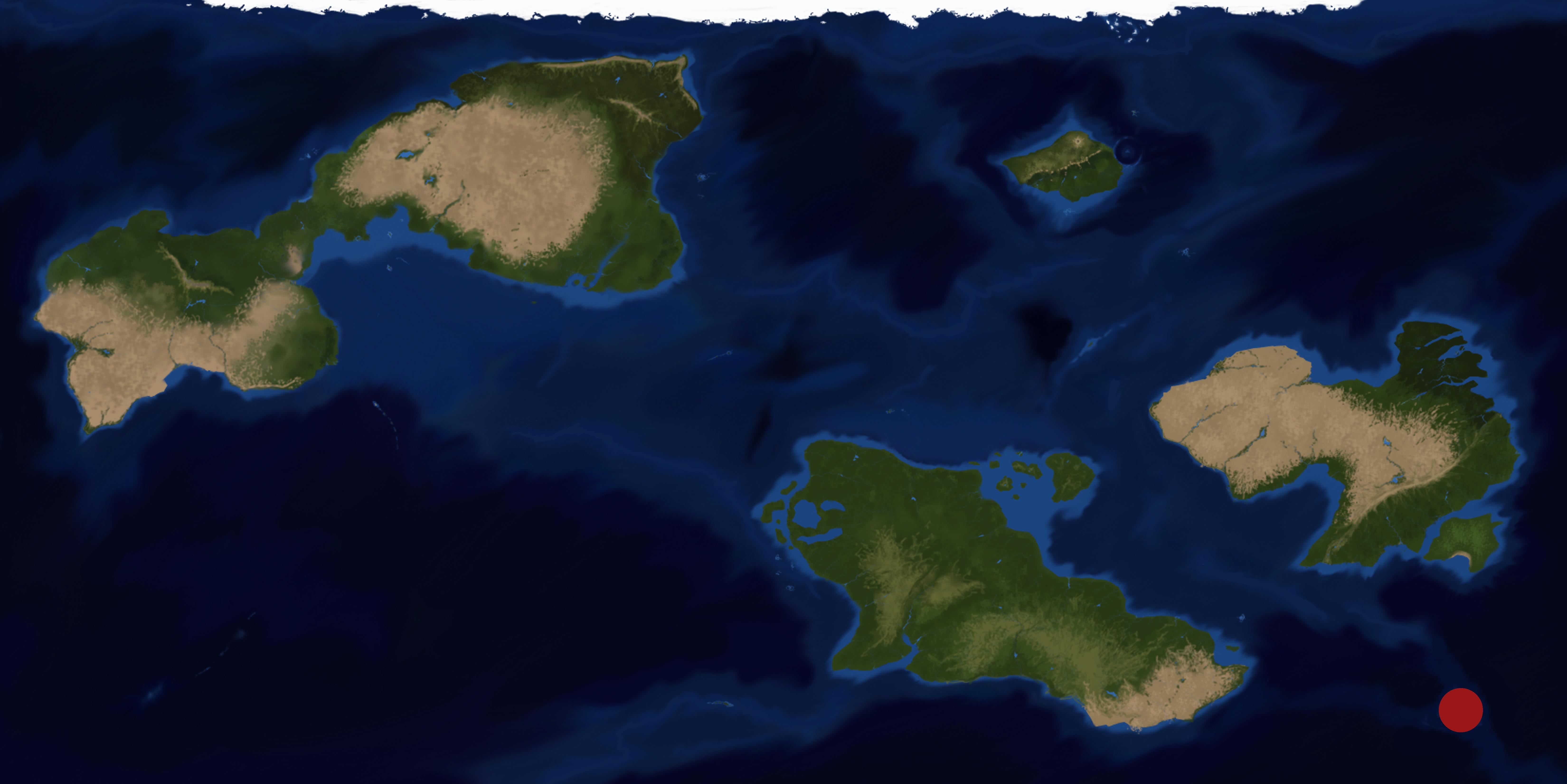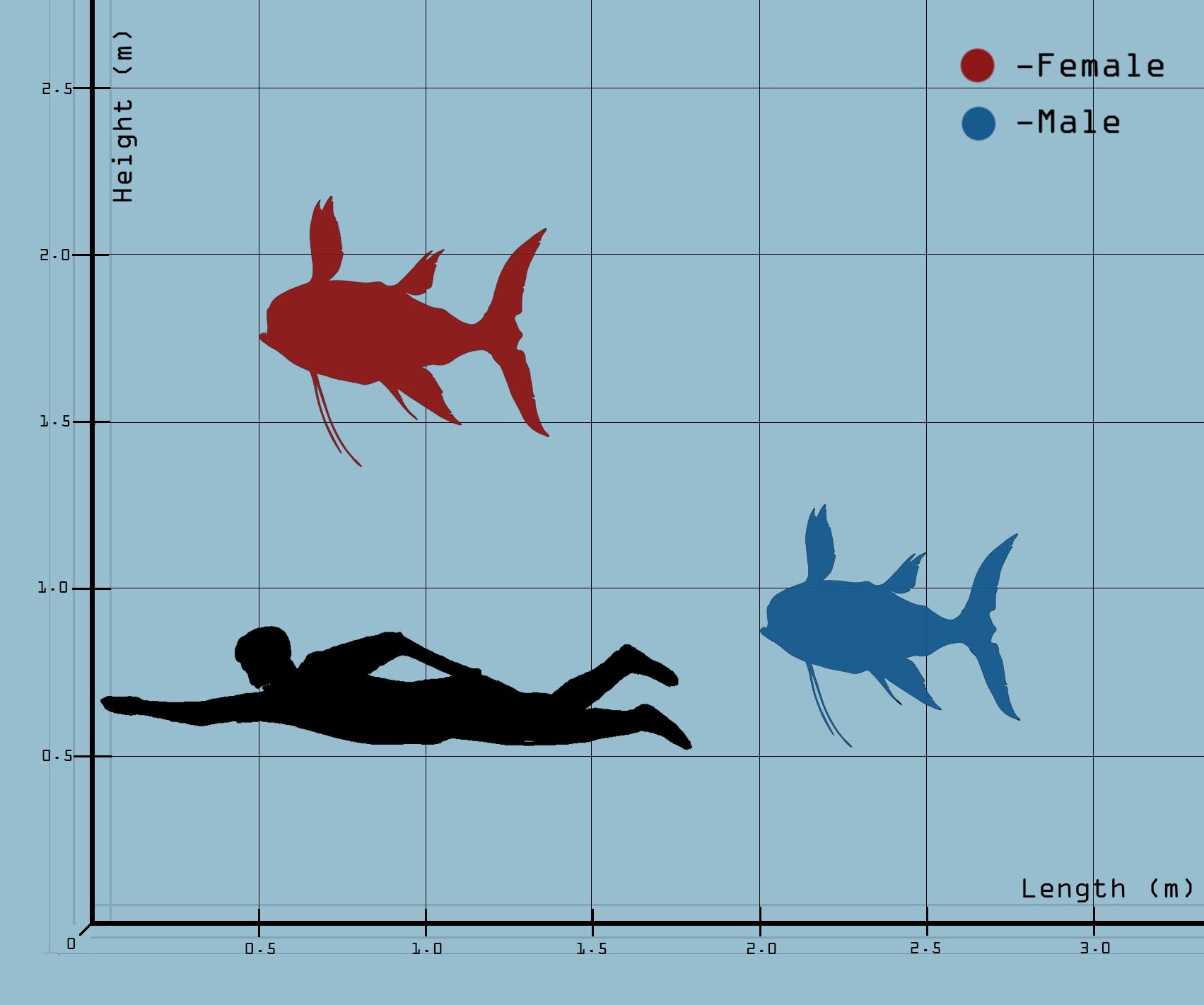Abyssal Bloodjaw
Katakóryfométopos microphtalmus is a Bathyfrontine Selenopiscoid from the abyssal plains of the Lizard's Archipelago.
The creature lives in shoals swimming close to the Ocean basin composing the Abyssal plains, several km under the surface, looking for food in the form of deep-sea invertebrates, chemosynthetic plants and carrion.
The incredibly small eyes, not uncommon in the subfamily, are still functional and used by the species to detect green to yellow light wavelengths used mostly to communicate by the invertebrates they hunt.
The plants they forage upon, produce a faint yellow light atop the tendril-like stems used to attract the attention of animals to the berry-like seed the animal feeds upon.
The extruding jaw is riddled with large teeth used both as display and to rip flesh away from the carcasses that fall into their habitat, using the sharp, rectangular teeth of the maxilla to cut while the jaw grasps.
They thrash their head from side to side energetically to efficiently reap way the meat from their meal, a purpose it's whole order never evolved to do but had to adapt to given the living conditions in the depths they are in.
K. microphtalmus usually surfaces during the mating season or the night time, when they go hunting in the open waters, making the nighttime the best moment to fish for the species.
When hunting in the open sea, the species will assume a more active lifestyle, swimming more energetically compared to the slow movements seen when near their benthic habitat.
Being one of the few species to remain in the cold waters off the coasts of the Lizard's archipelago all year long, makes it especially precious for local populations as a consistent food source during the Autumn and Winter when most other animals migrate north to the warmer waters of Outpost Island.
The animal is filetted and made into cutlets coated in Traveller corn breadcrumbs and Halastara leaves, served with mineroot and synthetic lemon flavouring.
Basic Information
Anatomy
- Head rectangular, cranium vertical.
- Eyes very small compared to the body.
- Jaw longer than maxilla.
- Dentition of the jaw composed by sixteen large teeth.
- Anal I fins moved to the base of the neck, shaped like barbs.
- Dorsal I & II coupled.
- Dorsal I moved cranially to the base of the neck, Dorsal II much smaller than the I.
- Gill Tail short and thin, ending in a circular Gill Fan with high ridges and a steep caudal drop.
- Caudal fins high and wide.
Genetics and Reproduction
Polyandrous species.
Katakóryfométopos microphtalmus mates in early spring, when the temperatures rise and most microbial organisms mate.
Males enter an active state for approximately three weeks, during this time the parapenis will remain outside of its cavity, swollen to the point of it being unable to retract.
Females enter the active state for two weeks a few days after the males, with no major visual changes if not the widening of the duct opening and an overproduction of mucus inside of it, leading to visible leaks coming out of the female's forehead, where the entrance is situated.
Several males will mate with the same female, fighting on mating rights by ramming against each other and biting the opponent.
Due to the habitat they live in, most of the mating rituals and selections are more physical, as seen above, compared to the ones of their epipelagic cousins that are, instead, more visual.
The various males will each mate with the female in order, with the first male having the biggest fertilization rate over the female, who will use a mix of all the seeds to create a mixed offspring but will reserve an entire egg sac only for the first male.
The shoal will ascend closer to the surface a few days after mating has ended, the change in pressure will swell the eggs, weakening the external layer and making it easier for the young to hatch when ready.
The females will lay the eggs on mid-sea floating plants, where they'll leave them to hatch.
Growth Rate & Stages
Ontogenesis in the species not very marked if not for a larger eye compared to the body then in adults.
Loss of natal aculeus three days after being born.
Ecology and Habitats
Abyssopelagic species found living at depths between 5000 and 6000 m.
Will ascend to the Bathypelagic zone to lay their eggs and feed at night.
They live in open abyssal plains with sporadic underwater bush areas.
Dietary Needs and Habits
Opportunistic animal feeding on invertebrates, plants and carrion.
Biological Cycle
Periannial species active all year long, doesn't migrate.
Additional Information
Social Structure
Social animal living in shoals averaging between seven to twenty specimens.
They communicate throw small flashes of yellow light emitted from the underbelly and slow clicks.
Domestication
Due to the conditions in which it lives, it is impossible to keep in captivity if not on specialized tanks which are, for the most part, unavailable to a private buyer.
Uses, Products & Exploitation
Of major importance in the local food industry as one of the few species not to migrate north in the winter.
Industrial fishing of the species is still inside sustainable levels thanks mostly to the reduced citizen count in the whole archipelago.
Geographic Origin and Distribution
Perception and Sensory Capabilities
Average eyesight, good chemolochatory apparatus.
Symbiotic and Parasitic organisms
Afflicted by Intestinal Tube Worms and False tooth parasites on the jaw.
Scientific Name
Eoichthyia; Tartarosomnia; Rotunducephalidae; Gladiopinneioidea; Quadratocephaloidea; Selenopiscoidea ; Cuspinninidae; Altifrontinae; Bathyfrontini; Katakóryfométopos; K. microphtalmus
Lifespan
8 Years
Conservation Status
Least Concern: no measures underway to protect the species.
Population Trend: STABLE
Average Weight
2-7 kg
Body Tint, Colouring and Marking
Light grey body, Jaw, throat and tip of the Anal I fins red.
Dark grey to black patterns over the tip of the Dorsal I & II, Anal II and Pectoral fins.
Thin dark band from the forehead to the eyes, single large band over the tail.
Dotten in the same dark grey to black over the upper body.
Remove these ads. Join the Worldbuilders Guild












Comments